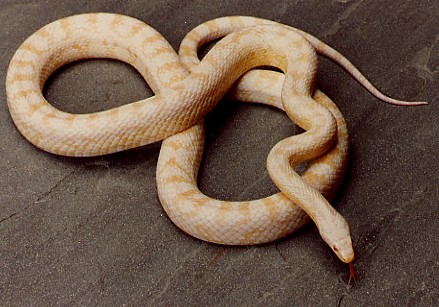Setup for the simple:Enclosures for the simple will be inexpensive and easily cleaned. They will be relatively small, and used mostly for breeding, or baby enclosures. Rubbermaid tubs, holes drilled in the tops, are most common. Plastic shoe boxes are also used.

Heating for the simple will most likely be a form of heat tape placed at one end of the tank, found at local hardware stores, or garden supply store. Heating pads are also used but are more expensive than the tape. Heat lamps are harder to keep a hot and cold spot, unless you use it in conjunction with the heat tape or pad in cooler climates. Dimmers can be used to regulate the temperature in the enclosure.
Lighting can be any type of lighting in the room, sunlight or artificial, as long as it won't heat up the tank to the point of cooking your snake. Corn snakes really don't require any special type of lighting, but some think light with UV properties might help, but I haven't found a difference.
Water dishes will consist of something cheap like deli bowls, which are disposable and easy to clean. Or, a dog dish may be used, if small enough.

Hiding Spots can be the same thing used as the water dish, just cut a hole in the bottom, large enough for the snake to fit in totally, and this way you save space. Or, a garden pot, with a notch cut in the bottom and turned upside down is cheap too.
Substrate will have to be disposable, or easily cleaned. Newspaper, or reptile carpets are economical. Pine or aspen are also easily cleaned.

